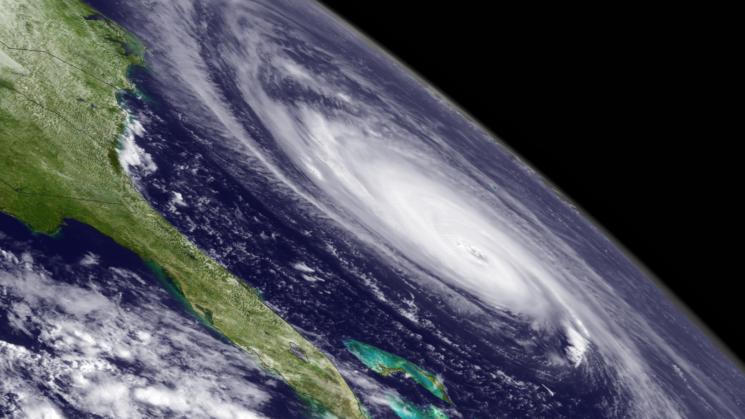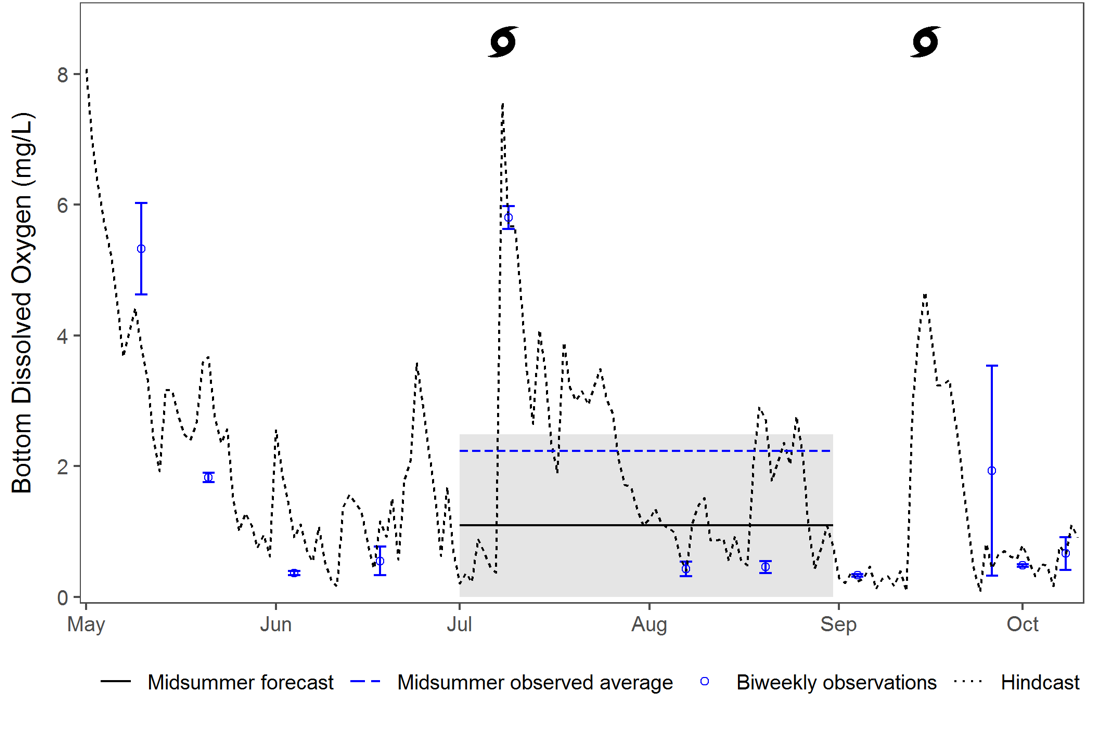
Last June, a team of researchers used an experimental model to forecast that hypoxia — low levels of dissolved oxygen — would be more severe than usual in the Neuse River Estuary during midsummer 2018. Such predictive models are important, because hypoxia can lead to ecosystem stresses, including fish kills.
Daniel Obenour, an environmental engineer at NC State, is collaborating with coastal ecologist Hans Paerl of the UNC-CH Institute of Marine Sciences on this North Carolina Sea Grant project. When the team later assessed how well their experimental model had anticipated oxygen levels, they determined their forecast effectively matched observed conditions — and they also found significant impacts on the estuary from Tropical Storm Chris and Hurricane Florence.
Alexey Katin is a doctoral student in civil engineering at North Carolina State University who works on the project. This blogpost also appeared in the Spring 2019 issue of Coastwatch magazine.
BY ALEXEY KATIN
To evaluate the performance of our experimental hypoxia forecast for the Neuse River Estuary, we compared our forecasted bottom-water dissolved oxygen concentrations with observed values.
We had forecasted severe hypoxic conditions for July and August relative to long-term averages throughout the Neuse River Estuary. Note the solid black line in Figure 1 below. In comparison, the average observed midsummer bottom-water dissolved oxygen concentrations, which the figure’s dashed blue line represents, was higher than our forecasted estimate, but within the 90% prediction interval, which the figure’s gray band indicates. The prediction interval expresses the uncertainty in the forecast due to unpredictable conditions, such as storm events.
However, the average observed dissolved oxygen level would have been lower and even closer to the forecasted value if July measurements had not immediately followed an extreme weather event, Tropical Storm Chris, that mixed the water column of the estuary, temporarily elevating the bottom dissolved oxygen levels.

Figure 1. Observed and Predicted Bottom-Water Dissolved Oxygen for May to October 2018 for the Middle Segment of the Neuse River Estuary. Storm symbols indicate when Chris and Florence struck the estuary.
The summer of 2018 was wet. From May through August, the mean Neuse River discharge — a measure of the volume of water flowing into the estuary — was twice as high as the historical average. These high flows deliver nutrients and promote water-column stratification, which leads to depletion of dissolved oxygen.
At the beginning of July, winds from Tropical Storm Chris mixed and oxygenated bottom waters throughout the estuary. Unfortunately, we have no observations of conditions in late July after this storm event, because the sampling cruise was canceled due to maintenance.
During the second half of July and the beginning of August, the estuary continued to receive substantial fresh water and nutrients from upstream. As a result, the whole estuary became severely hypoxic, with levels of bottom-water dissolved oxygen less than 1 milligram per liter during August. The absence of strong winds and precipitation that month maintained hypoxic conditions until the beginning of September, and monitoring staff reported fish kills.
Observations following Hurricane Florence in late September and October indicated severe hypoxia continued into the fall.
In November, we reran the hypoxia simulation using observed daily data for May through October and reconstructed (“hindcasted”) daily dissolved oxygen conditions in the estuary. Note the dotted black line in Figure 1.
The hindcast indicated that the estuary was hypoxic, below 2 mg/L, about half the time during midsummer 2018. In addition, the hindcast captured elevated bottom-water dissolved oxygen levels from Tropical Storm Chris and Hurricane Florence. The hindcast also matched summer observations well, as shown by the blue points in Figure 1 — and it supported our forecasted midsummer hypoxic conditions in the estuary.
In short, the experimental model we used to forecast oxygen levels this past summer shows great promise as we look ahead.
Read more about the causes of hypoxia and our work with experimental modeling:
Forecasting Hypoxia, Algal Blooms for the Neuse River Estuary
Model Forecasts Severe Hypoxia through August in Neuse Estuary
Lead photo: Florence’s late-summer approach. Credit: NOAA.